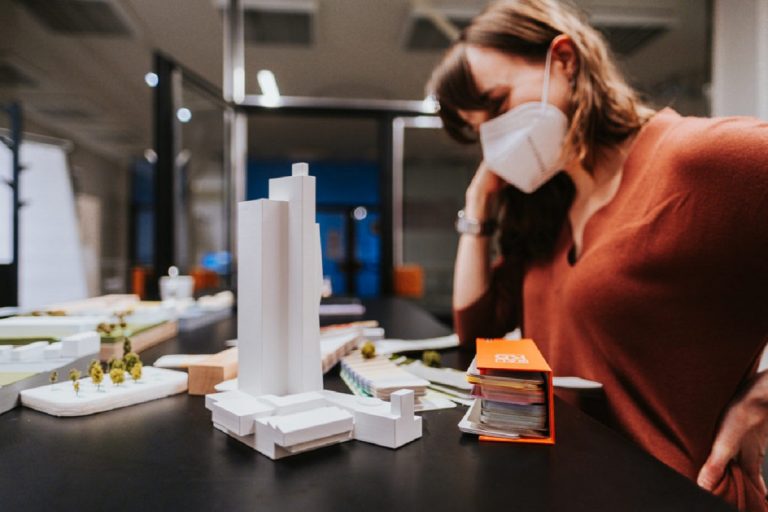An international competition is currently underway to choose the design for the long-awaited new central train station for Brno. A detailed model is being created of the planned Trnitá district, where the station will be located, to help the expert jury choose the winning design. Photo Credit: KAM Brno.
Brno, Feb 19 (BD) – The 3D studio of Brno University of Technology’s Faculty of Fine Arts (FAVU) is in the process of creating a model of the proposed Trnitá district, proposed site of the Brno’s long-awaited new central train station. The model, representing an area of Brno two kilometers long and one and a half kilometers wide on 12 square meters, will be used by the expert jury to choose the winning design from the 12 currently being prepared.
Experts from FAVU are constructing the model from wood, and by means of 3D printing. Two thirds of the terrain is already complete. The finished model will include hundreds of buildings, over 2,000 trees, train and tram tracks, and the river Svratka as a significant landscape element, all at a scale of 1:500. The competition teams will insert their proposed buildings and other elements directly into the model, allowing them to be evaluated from a vantage point and in the context of the whole district.
The twelve competitors are now working on their designs for the new station by the river. Four of them will be selected for the second phase of the competition, in which they will complete the proposals in greater detail, including physical representations of the competition area to be inserted into the model of the new district. In July 2021, the jury will select a winner and determine the order of the second, third and fourth place entries.
The entire finished model, including the winning form of the main railway station, will be presented to the public in the autumn of this year, where it will be the centrepiece of an exhibition of competition proposals.
The model will then be divided into twelve parts, in order to serve further public negotiations over the future of the district and subsequent competitions in the coming years. Approximately 100 important buildings, such as local landmarks and listed buildings, will be permanently attached. Other buildings will be ready for redevelopment or replacement as plans for the area evolve.







